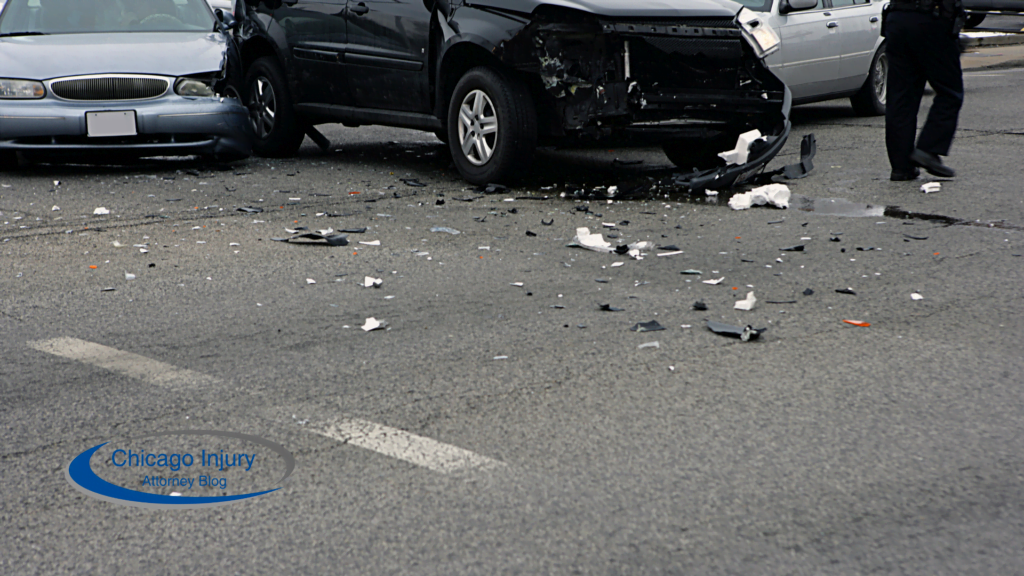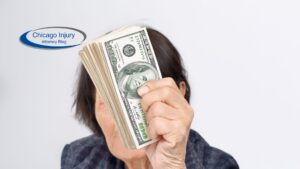Knowing what steps to take after a multi-vehicle collision is crucial for the safety of all involved parties and for resolving legal and insurance matters.
Immediately after a multi-vehicle collision, the first priority should always be safety. Check for injuries among passengers and drivers and ensure everyone moves to a safe location away from traffic if possible.
Next, contact the authorities by dialing emergency services or the police to report the accident. Follow their instructions and provide accurate details of the incident for documentation.
It is important to exchange information with other drivers involved, including names, contact details, insurance information, and vehicle registration numbers. Take pictures of the scene, license plates, and any visible damages.
If there are any doubts about injuries or potential medical concerns, seek immediate medical attention. Even if injuries seem minor at first, it’s crucial to get checked by a healthcare professional.
Types of Multi-Vehicle Collisions
Multi-vehicle collisions can take different forms, including head-on collisions, side-impact collisions, rear-end collisions, and pile-up accidents involving multiple vehicles.
In a head-on collision, two vehicles crash into each other from the front, often resulting from one vehicle crossing into oncoming traffic. The impact can be severe due to the combined force of both vehicles moving towards each other.
Side-impact collisions, also known as T-bone accidents, occur when the front of one vehicle collides with the side of another. These accidents commonly happen at intersections and can lead to serious injuries, especially to passengers on the impacted side.
Rear-end collisions happen when one vehicle hits another from behind. These accidents are often caused by tailgating or distracted driving, resulting in whiplash injuries for the occupants of the front vehicle.
Pile-up accidents involve multiple vehicles crashing into each other, often on highways or in congested traffic. These collisions can be chaotic, with a domino effect leading to extensive damage and a higher risk of serious injuries.
Head-on, Side-Impact, Rear-End, Pile Up
Head-on collisions occur when two vehicles collide front to front, side-impact collisions involve the sides of vehicles crashing, rear-end collisions happen when one vehicle strikes the back of another, and pile-up accidents involve multiple vehicles colliding in a chain reaction.
Head-on collisions are considered one of the most dangerous types of accidents due to the force of impact being concentrated at the front of the vehicles, often leading to severe injuries or fatalities.
On the other hand, side-impact collisions, also known as T-bone accidents, can result in significant injuries to drivers and passengers on the impacted side of the vehicle.
Rear-end collisions commonly occur at intersections or in situations of sudden braking, causing whiplash injuries to the occupants of the vehicle that was hit.
Common Causes of Multi-Vehicle Collisions
Multi-vehicle collisions can be caused by various factors, including poor weather conditions, alcohol impairment, reckless driving behaviors, and the time of day when accidents occur.
Regarding poor weather conditions, factors such as heavy rain, fog, snow, and ice can significantly reduce visibility and traction on the roads, leading to a higher risk of collisions. Drivers may find it challenging to navigate slippery surfaces and react quickly to sudden changes in road conditions.
Alcohol impairment is another key contributor to multi-vehicle collisions, as it can impair a driver’s judgment, coordination, and reaction time. Consuming alcohol significantly increases the likelihood of reckless driving behaviors such as speeding, weaving between lanes, and running red lights, all of which can lead to devastating accidents.
Poor Weather, Alcohol, Reckless Driving, Time of Day
Poor weather conditions like heavy rain or fog, alcohol impairment, reckless driving behaviors such as speeding or tailgating, and specific times of the day like rush hours or late nights can all lead to multi-vehicle collisions.
Weather plays a significant role in causing multi-vehicle collisions. Heavy rain reduces visibility and makes roads slippery, increasing the likelihood of accidents. Fog can also obscure vision, making it challenging for drivers to react quickly.
Alcohol impairment is a major contributor to collisions, impairing judgment and coordination. Speeding and tailgating are reckless driving practices that escalate the risk of crashes by reducing reaction time. Rush hours see higher traffic volumes, leading to congestion and potential pile-ups. Late nights are notorious for accidents due to fatigue and reduced visibility.
Determining Fault in Multi-Vehicle Collisions
Determining fault in multi-vehicle collisions involves assessing factors such as comparative negligence, understanding legal rights post-collision, and gathering evidence to establish liability.
Regarding comparative negligence, it plays a crucial role in determining the responsibility of each driver involved. This legal concept allows for the allocation of fault based on the degree of negligence exhibited by each party. Understanding one’s legal rights post-collision is essential for ensuring fair treatment and proper compensation. In these situations, being aware of your entitlements can help you navigate insurance claims, settlements, and legal proceedings effectively.
Gathering evidence is a fundamental step towards establishing liability in multi-vehicle collisions. Documenting the scene, collecting witness statements, and obtaining police reports are essential for presenting a clear picture of what transpired. This evidence can be crucial in determining fault and pursuing legal action if necessary.
Comparative Negligence, Legal Rights After Collision
In multi-vehicle collisions, determining fault involves understanding the legal concept of comparative negligence and exercising one’s legal rights as per traffic laws to establish liability.
Comparative negligence, a vital legal principle, allocates fault in proportion to each party’s contribution to an accident. This means that even if a driver bears some responsibility, they may still be entitled to compensation. It’s important to note that traffic laws vary by state and can impact how fault is assigned in multi-vehicle collisions.
Legal rights serve as safeguards in liability disputes as they determine the extent of responsibility borne by each party involved. Understanding these rights can aid in protecting one’s interests and seeking appropriate compensation. By adhering to traffic laws and being familiar with legal precedents, individuals can navigate complex fault determinations more effectively.
Legal Rights After a Multi-Vehicle Collision
After a multi-vehicle collision, victims have legal rights that protect them in terms of fault determination and seeking compensation for damages incurred.
Following a multi-vehicle accident, individuals involved have the right to gather evidence and establish liability for the crash. This can involve examining police reports, witness statements, and expert testimony to determine who was at fault.
Compensation claims can cover medical expenses, property damage, lost wages, and pain and suffering. Victims can seek legal guidance to navigate the complexities of insurance claims, negotiations, and potential lawsuits. It is crucial to understand the statutes of limitations that apply to personal injury cases to ensure timely action for seeking justice and financial relief.
Victim’s Rights, Fault Legal Rights
Victims of multi-vehicle collisions can seek legal guidance from attorneys specializing in personal injury cases, especially in scenarios involving complex multi-car accidents.
These legal professionals are equipped to navigate the intricacies of multi-car accident cases, which often involve determining liability among multiple parties and handling complex insurance claims. By consulting with experienced personal injury attorneys, victims can understand their legal rights and options for seeking compensation for injuries, property damage, and other losses resulting from the collision.
Hypothetical Multi-Vehicle Collision Scenarios
Exploring hypothetical multi-vehicle collision scenarios can provide insights into the complexities of determining fault and the importance of evidence in such situations.
In one scenario, a chain reaction collision involving three vehicles occurs at an intersection. Vehicle A runs a red light and collides with Vehicle B, which then gets pushed into Vehicle C. While it might seem evident that Vehicle A is at fault for running the red light, thorough investigation is crucial. Witness testimonies, traffic camera footage, and vehicle damage analysis play key roles in establishing a clear sequence of events.
In another hypothetical situation, a multi-vehicle collision happens on a highway during heavy rain. Vehicle X hydroplanes, causing a chain reaction as vehicles Y and Z behind are unable to stop in time. Determining fault in this scenario requires assessing factors such as speed, road conditions, and visibility. Dashcam footage, skid marks, and weather reports are essential pieces of evidence to reconstruct the events accurately.
Scenario Examples
Consider scenarios where multiple drivers are involved in accidents, showcasing how evidence like police reports and driver testimonies play a pivotal role in determining liability.
Picture a situation where three vehicles collide at an intersection, each driver claiming they had the right of way. In such a complex multi-vehicle collision, it becomes crucial to rely on tangible evidence to unravel the sequence of events.
In another instance, imagine a highway crash involving a car, a truck, and a motorcycle. Without concrete proof such as dashcam footage or eyewitness accounts, assigning blame accurately can prove challenging. Through meticulous analysis of physical evidence and witness statements, the truth gradually emerges, shedding light on the responsible party.
Evidence for Determining Fault
Collecting concrete evidence such as driver negligence instances, chain reaction dynamics, and insurance company assessments is crucial in determining fault in multi-vehicle collisions.
Driver negligence can manifest in various forms, including distracted driving, speeding, or running red lights, all of which can trigger a chain reaction involving multiple vehicles. Understanding the chain reaction dynamics play a pivotal role in dissecting the sequence of events leading to the collision and attributing responsibility.
Moreover, insurance company assessments provide an additional layer of analysis, often considering factors like road conditions, weather, and witness statements to ascertain liability in multi-vehicle accidents.
FAQs about Multi-Vehicle Collisions
Common FAQs about multi-vehicle collisions cover topics like drunk driving implications, reckless driving consequences, the role of police, attorney assistance, and individuals’ legal rights post-accident.
Drunk driving can have severe repercussions in multi-vehicle collisions, leading to injuries, fatalities, and significant property damage. It not only endangers the lives of those involved but also poses legal consequences for the driver responsible.
Reckless driving, such as speeding or running red lights, can escalate a minor accident into a larger collision involving multiple vehicles, causing a chain reaction of events with devastating outcomes.
Police play a crucial role in multi-vehicle collisions by documenting the scene, gathering evidence, and determining the at-fault parties. Their swift response and accurate reporting are vital for insurance claims and legal proceedings.
Attorney assistance after a multi-vehicle collision can help victims navigate the complex legal processes, negotiate with insurance companies, and seek rightful compensation for damages, medical expenses, and emotional distress.
Individuals have legal rights after multi-vehicle accidents, including the right to pursue legal action against negligent parties, the right to fair compensation for losses, and the right to seek justice through the legal system.
Blame, Actions to Take, Insurance, Restitution
FAQs regarding multi-vehicle collisions often revolve around assigning blame, recommended actions to take after an accident, dealing with insurance companies, and seeking restitution for damages and injuries sustained in the collision.
Understanding the complexities of determining fault in a multi-car accident can be challenging due to the numerous vehicles involved and varying factors contributing to the collision. After a multi-vehicle accident, individuals are advised to prioritize safety by moving vehicles to a safe location if possible and checking for injuries, including those that may not be immediately apparent.
Communication with insurance companies becomes crucial post-accident, with the need to provide accurate details of the incident promptly. Seeking potential compensation for injuries and damages often involves interacting with insurance adjusters and possibly engaging legal assistance to navigate the process smoothly.
Frequently Asked Questions
What to Do After a Multi-Vehicle Collision?
The steps to take after a multi-vehicle collision depend on the severity of the accident and any injuries sustained. However, there are some general guidelines that can help in most cases.
What should I do immediately after a multi-vehicle collision?
The first priority is to check for any injuries and call for medical assistance if needed. It is also important to contact the police to report the accident and move the vehicles to a safe location if possible.
Should I exchange information with other drivers involved in the collision?
Yes, it is important to exchange contact and insurance information with all drivers involved in the accident. This information will be needed when filing a claim with your insurance company.
Do I need to take pictures of the accident scene?
It is always a good idea to take photos of the accident scene, including any damage to vehicles and any visible injuries. These can serve as evidence when filing a claim with your insurance company.
What if I am injured in the multi-vehicle collision?
If you are injured, seek medical attention immediately. You should also inform your insurance company about the accident and any injuries sustained, as well as keep track of all medical expenses related to the accident.
Do I need to notify my insurance company about the multi-vehicle collision?
Yes, it is important to notify your insurance company about the accident as soon as possible. Even if you are not at fault, your insurance company needs to be aware of the incident in case any claims are filed against you.





